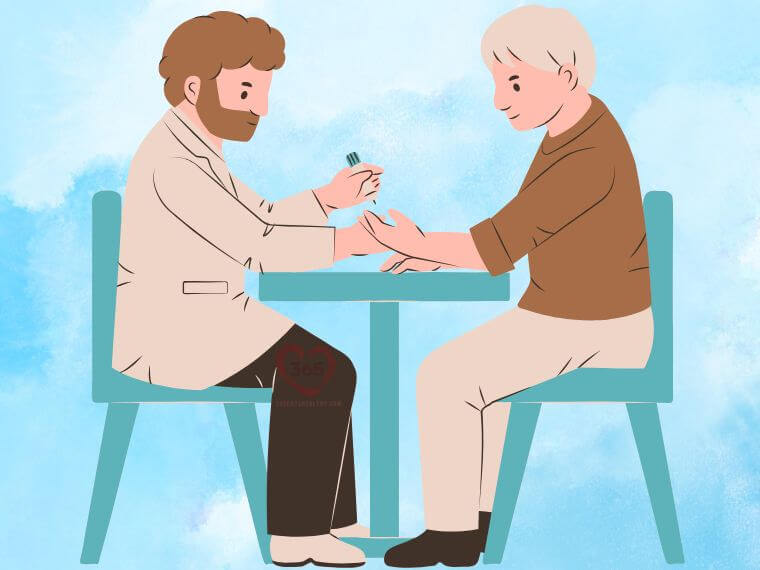These 7 non-negotiables are your daily foundation for stable blood sugar. Master them to naturally support energy, focus, and long-term glucose control.
Managing blood sugar effectively goes far beyond just diet. There are several often overlooked but powerful factors that, when combined, can make a major difference in your daily numbers.
Below is a comprehensive plan covering hydration, routine, movement, stress, supplementation, and tracking — all key to better blood sugar control.
1. Start Your Day Right: Non-Negotiables for Glucose Balance in the Morning
Many people drink coffee as soon as they wake up, but this can be a mistake if you’re trying to manage blood sugar. Consuming caffeine on an empty stomach may increase blood sugar by up to 50%, due to a surge in cortisol and a temporary reduction in insulin sensitivity.
Instead, prioritize a protein-rich breakfast — such as eggs, Greek yogurt, or a protein shake — within the first hour of waking. Then, wait about 90 minutes before drinking your coffee. This simple change can significantly improve your glucose response.
Bonus Tip: Add 1 tablespoon of cinnamon to your coffee. Cinnamon has been shown to improve insulin sensitivity and support blood sugar balance — plus, it gives your drink a warm, flavorful kick.
Starting your day with the right rhythm sets the stage for better metabolic control, improved energy, and fewer blood sugar crashes later on. Small tweaks in your routine can lead to big results over time.
2. Hydration Tips: Why hydration matters for blood sugar control
Staying properly hydrated is one of the most overlooked — yet incredibly effective — strategies for stabilizing blood sugar.
Aim to drink at least 65 oz (about 2 liters) of water daily, unless you have a medical condition that requires fluid restriction, like low sodium.
But here’s the real trick: Get most of your water in before 2:30 PM. Front-loading hydration helps minimize nighttime bathroom trips, which can interrupt your sleep — and disrupted sleep is a major driver of blood sugar instability.
Too often, people go all day barely sipping water, then try to make up for it in the evening. The result? Poor sleep and poor glucose control.
Quick check: Look at your urine color — you want a pale lemonade shade. That’s a great sign you’re hydrated.
If you’re active, consider adding electrolytes to support deeper hydration and better glucose transport:
~400 mg of potassium
~200 mg of magnesium.
3. Stress Management Protocol
Did you know that stress can raise your blood sugar more than food — even without eating anything? That’s why managing stress is essential.
Incorporate this quick daily practice to support your nervous system:
Morning:
- 5–10 minutes of breath-focused meditation
- Take a 30-second cold shower to reset your nervous system
- Write down 5 things you’re grateful for
Throughout the day:
Try the 4-7-8 breathing technique when you’re feeling stressed or anticipating something uncomfortable — it can help calm your nerves quickly. Check out this article to learn the 4-7-8 breathing technique.
Get outside:
Spend at least 15 minutes in nature — the combination of movement and sunlight is proven to lower cortisol and support insulin sensitivity.
4. Movement Throughout the Day
Consistent movement has a massive impact on glucose levels — more than most realize.
Hourly movement:
Stand or move for at least 3 minutes every hour.
Set a reminder if needed — small, regular movement adds up over time.
Post-meal movement:
Take a 10-minute walk within 30 minutes of each meal.
If walking isn’t possible, do 50 air squats or seated marches.
Tips: Sustained daily movement has a profound effect on blood sugar control — more than commonly recognized
5. Advanced Glucose Support Supplement Integration
For extra support, consider adding a targeted supplement like GlucoTrust to your daily routine.
Want to learn how GlucoTrust works and why experts recommend it? Click here to find out more.
Track your fasting glucose for 30 days.
Most users report improvements within the first week, but full benefits typically take 4–5 weeks, and for some, continue building for up to 3 months.
6. Success starts with measurement. Monitor the right data, and the results will follow
Daily Checks:
- Measure your fasting glucose at the same time every morning
- Aim for 90–100 mg/dL
- Also test 2 hours after meals — ideally, stay under 140 mg/dL
Weekly Metrics to Track:
- Average fasting glucose
- Post-meal spikes
- Stress levels (rate daily from 1–7)
- Sleep duration
Monthly Metrics:
- A1C trends (if available)
- Changes in energy levels
- Body composition changes
- Adjustments in medications or supplements
7. Implementation Strategy
Consistency and practice are key to success. Here’s how you can begin
Here’s how to start:
Practice the Emergency Blood Sugar Protocol even when you’re not in crisis — so you’re ready when you are.
Gradually layer in the other strategies outlined above: hydration, movement, morning routine, stress protocol, supplements, and tracking.
Take a holistic view. Don’t focus on just one element — sustainable blood sugar control is the result of a comprehensive and consistent approach.
Final Thoughts:
Mastering your blood sugar isn’t about perfection — it’s about repetition, awareness, and adjustment. When you commit to these habits, you’ll begin to see powerful, lasting changes.

